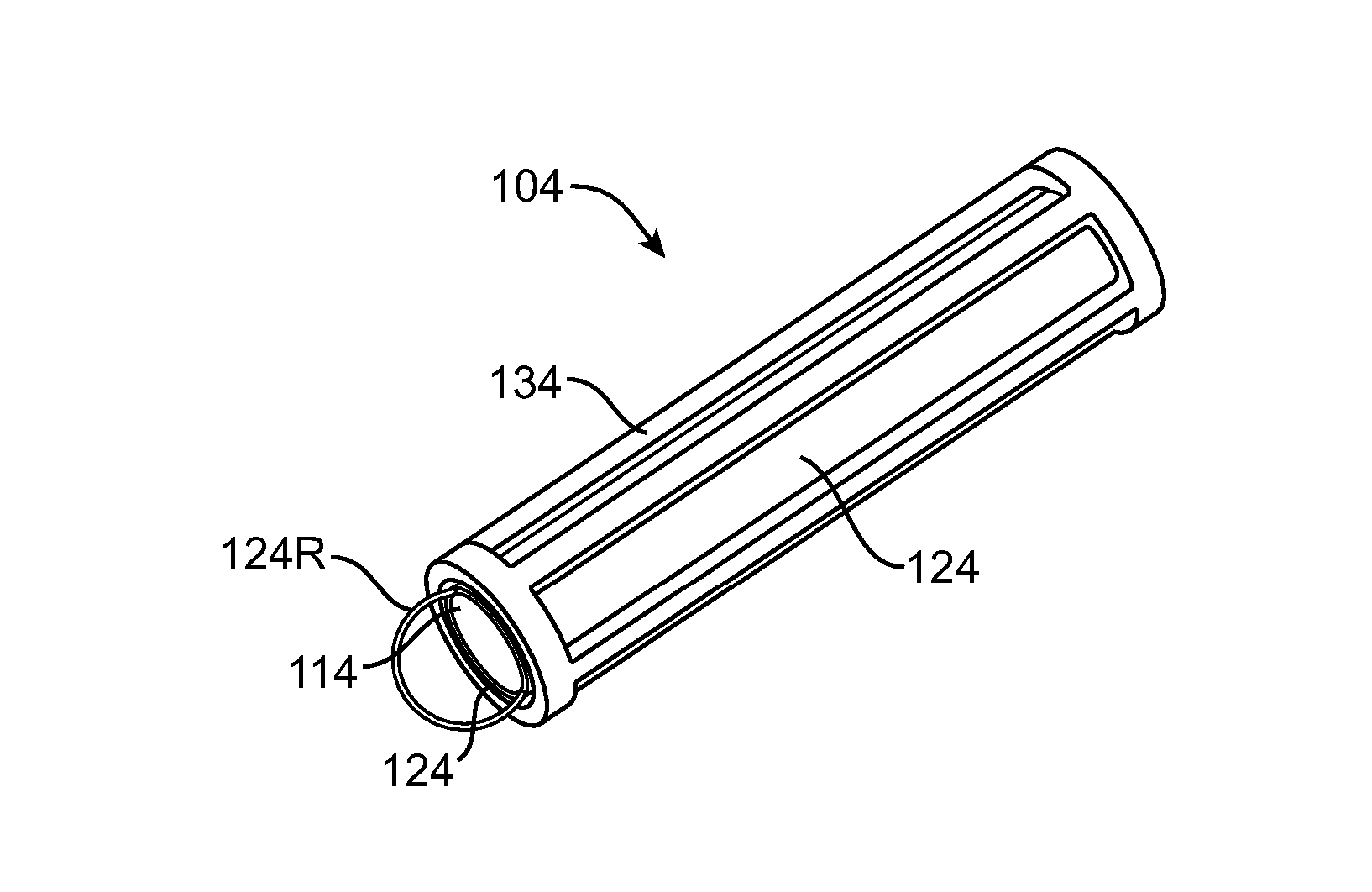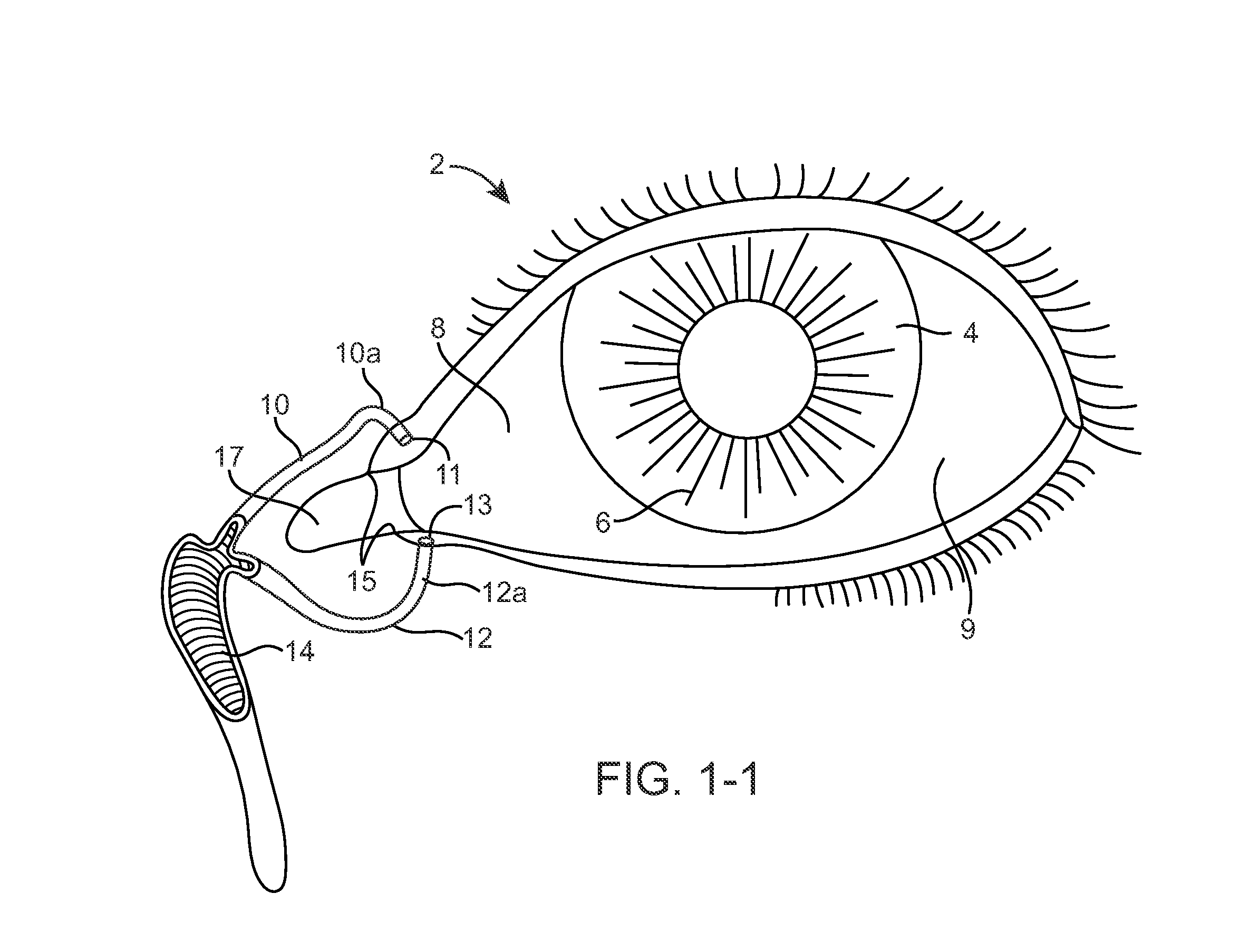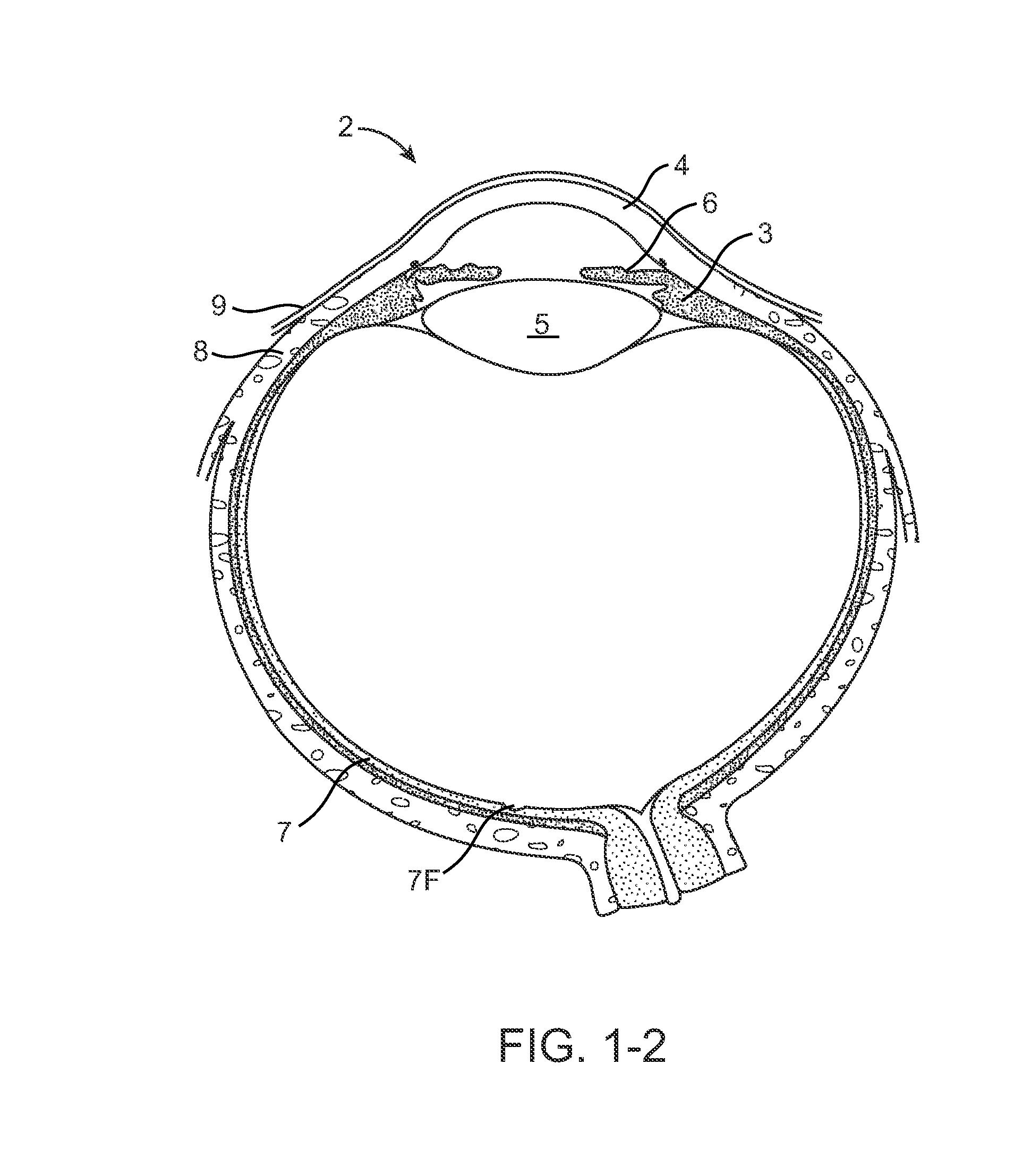Drug Delivery Methods, Structures, and Compositions for Nasolacrimal System
a delivery method and system technology, applied in the direction of drug compositions, prosthesis, cardiovascular disorders, etc., can solve the problems of affecting the efficacy of the therapies available, reducing vision and many times blindness, and patients may not follow the directed treatment regime. , to achieve the effect of inhibiting the inadvertent expulsion of the agent matrix in us
- Summary
- Abstract
- Description
- Claims
- Application Information
AI Technical Summary
Benefits of technology
Problems solved by technology
Method used
Image
Examples
example 1
Latanoprost Drug Core Elution Data
[0134] Drug cores as described above have been fabricated with different cross sectional sizes of 0.006 inches, 0.012 inches, and 0.025 inches, and drug concentrations of 5%, 10% and 20% in a silicone matrix. Theses drug cores can be made with a Syringe Tube and Cartridge Assembly, Mixing Latanoprost with Silicone, and Injecting the mixture into a polyimide tube which is cut to desired lengths and sealed. The length of the drug cores were approximately 0.80 to 0.95 mm, which for a diameter of 0.012 inches (0.32 mm) corresponds to total Latanoprost content in the drug cores of approximately 3.5 μg, 7 μg and 14 μg for concentrations of 5%, 10% and 20%, respectively.
[0135] Syringe Tube and Cartridge Assembly. 1. Take polyimide tubing of three different diameters 0.006 inches, 0.0125 inches and 0.025 inches. 2. Cut polyimide tubing of different diameters to 15 cm length. 3. Insert Polyimide tubes into a Syringe Adapter. 4. Adhesive bond polyimide tube...
example 2
Cyclosporin Drug Core Elution Data
[0145] Drug cores as described in Example 1 were made with cyclosporin having a concentration of 21.2%. FIG. 8A shows elution profiles of cyclosporin from drug cores into a buffer solution without surfactant and into a buffer solution with surfactant, according to embodiments of the present invention. The buffer solution was made as described above. The solution with surfactant includes 95% buffer and 5% surfactant, UP-1005 Ultra Pure Fluid from Dow Corning, Midland Mich. Work in relation with embodiments of the present invention indicates that in at least some instances, surfactants may be used in in vitro to model in situ elution from the eye as the eye can include natural surfactants, for example Surfactant Protein D, in the tear film. The elution profile of cyclosporin into surfactant is approximately 50 to 100 ng per day from 30 to 60 days. Empirical data from tears of a patient population, for example 10 patients, can be measured and used to ...
example 3
Bimatoprost Bulk Elution Data
[0146] Bulk samples of 1% Bimatoprost having a known diameter of 0.076 cm (0.76 mm) were prepared. The height of each sample was determined from the weight and known diameter of the sample.
TABLE 2Bulk Sample SizecalculatedExposed Surfacesamplewt (mg)diameter (cm)height (cm)Area(cm{circumflex over ( )}2)14-2-101.90.0760.420.10914-2-111.50.0760.330.08814-2-121.90.0760.420.109
[0147] The calculated heights ranged from 0.33 cm to 0.42 cm. The exposed surface area on each end of each bulk sample was approximately 0.045 cm2, providing volumes of 0.019 cm3 and 0.015 cm3 for the 0.42 and 0.33 cm samples, respectively. The exposed an exposed surface area of samples calculated from the height and diameter without a drug sheath was approximately 0.1 cm2. Three formulations were evaluated: 1) silicone 4011, 1% Bimatoprost, 0% surfactant; 2) silicone 4011, 1% Bimatoprost, approximately 11% surfactant; and 3) silicone 4011, 1% Bimatoprost, approximately 33% surfacta...
PUM
| Property | Measurement | Unit |
|---|---|---|
| size | aaaaa | aaaaa |
| size | aaaaa | aaaaa |
| length | aaaaa | aaaaa |
Abstract
Description
Claims
Application Information
 Login to View More
Login to View More - R&D
- Intellectual Property
- Life Sciences
- Materials
- Tech Scout
- Unparalleled Data Quality
- Higher Quality Content
- 60% Fewer Hallucinations
Browse by: Latest US Patents, China's latest patents, Technical Efficacy Thesaurus, Application Domain, Technology Topic, Popular Technical Reports.
© 2025 PatSnap. All rights reserved.Legal|Privacy policy|Modern Slavery Act Transparency Statement|Sitemap|About US| Contact US: help@patsnap.com



